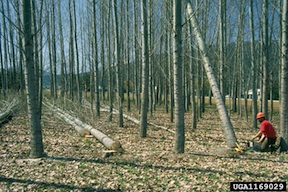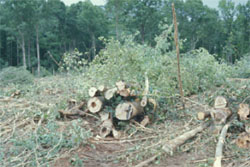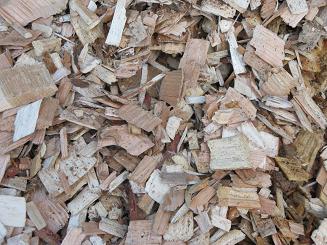Articles in this section will introduce the numerous sources of woody biomass throughout the United States. The discussion is not limited to forestry biomass and bioenergy, but focuses on the bioenergy industry as a whole. And just because a source …
Traditional Pulpwood and Sawtimber Crops
By: S. Ashton

In addition to residues, waste, and dedicated energy crops, pulp wood and commercial-grade timber can be used as an energy or bioproducts feedstock. When used this way, the fiber is called …
Forest Health Improvement Removals
By: Sarah Ashton
A number of management activities aimed toward increasing the health of forests can require removal of woody biomass. Fuel load reduction, removal of dead or dying wood due to insect or disease, and ecological restoration are three …
Natural Catastrophic Event Recovery

Clean up operations after natural disasters, such as hurricanes and ice storms, produce large amounts of debris that have traditionally been piled up to burn or rot. Debris from …
Waste and Debris Collection
By: Lauren McDonnell
Two major sources of urban wood residue are the woody portion of municipal solid waste (MSW) and construction and demolition debris. Of the 62.1 million dry tons of urban wood residues generated annually, about 28.3 million …
Short Rotation Woody Crops
By: S. Ashton

Fast growing short rotation woody crops (SRWC), such as hybrid poplars, willows, and other species, are specifically grown to be an energy feedstock. The species of trees are often chosen …
Timber Harvest Residues
By: S. Ashton

Residues from forest harvesting operations include logging residues (i.e. branches, tops, and stumps) left on-site, low-quality commercially grown trees, dead wood, and other noncommercial tree species. Other residues include wood that has …
